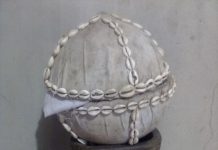THE IMAM, NOT THE MU’ADHDHIN
BY
SANNI, KAY YUSUF
My experience praying behind an imam yesterday reminded me the preponderance of an untoward act in our mosques in southwestern Nigeria, hence the reason I could not but scribe this correctional observation.
I had just left a gathering coasting home to do justice to queen’s delicacy awaiting my consumption. Salatul Maghrib got me on the way, and I branched at the nearest worship house to humble myself before Allah in servitude. The masjid wasn’t only big but beautiful – tiled and lit to elation. Prayer go just dey sweet you.
The mu’adhdhin made the iqaamah, and stepped forward was an elderly man, the raatib imam, I guess. He made the opening Takbeer and we could hardly hear him talk – not because he had a fainted voice, but because there was no techno-electronic aid. I wasn’t surprised as congregants were many and the imam was aged too. Our genuflection flow was therefore left to the mercy of the mu’adhdhin who had the mic in his hand.
All through the timeout, only worshippers at the front row and those closed to them could hear the imam’s recitations. We were rather following the mu’adhdhin’s re-echoing of the imam’s Takbeeraat.
We stood still and the whole place was almost without any voice sound, as though it was Salatudh-dhuhr or ‘Asr. If we could be that stranded, how much more the women up. It was on hearing “aameeeeeen” echoed at the front we knew Suratul Fatihah had been recited. When I heard “sallallaahu ‘alayhi wa sallam” cacophonously chorused at some point, I knew it was the concluding part of Suratul Fath being rendered.
We needed the imam’s voice to concentrate. We needed his recitations to reflect. But all that got to our ears were the mic holder’s Takbeeraat for ruku’, sujud and tasleem.
The above is what is obtainable in most of our masaajid. The imam is just like a figure-head on Salah. The mu’adhdhin seems more important than the imam. Whereas, the imam – not the mu’adhdhin – is to be followed.
أَنَس بْنَ مَالِكٍ رضي الله عنه، قال: سَقَطَ النَّبِيُّ صلى الله عليه وسلم عَنْ فَرَسٍ، فَجُحِشَ شِقُّهُ الأَيْمَنُ، فَدَخَلْنَا علَيْهِ نَعُودُهُ، فَحَضَرَتِ الصَّلاةُ، فَصَلَّى بِنَا قَاعِدًا، فَصَلَّيْنَا وَرَاءَهُ قُعُودًا، فَلَمَّا قَضَى الصَّلاةَ قَالَ: ((إِنَّمَا جُعِلَ الإِمَامُ لِيُؤْتَمَّ بِهِ، فَإِذَا كَبَّرَ فَكَبِّرُوا، وإِذَا سَجَدَ فَاسْجُدُوا، وإِذَا رَفَعَ فَارْفَعُوا، وإِذَا قَالَ: سَمِعَ اللهُ لِمَنْ حَمِدَهُ، فَقُولُوا: رَبَّنَا وَلَكَ الْحَمْدُ…))
Anas bn Malik narrated that the Prophet (peace be upon him) said: “Surely, the imam is appointed to be followed (on Salah). When he says Takbeer, say Takbeer. When he prostrates, you should prostrate. When he bows, you should bow. When he says sami’a Llaahu liman hamidah, you should say Rabbanaa wa laKal hamd…”
The imam is to be followed, not as otherwise commonly done in our mosques. Congregants are entitled to listen to his voice, not any other’s. Where there is the need to use the mic, the imam should be the user – to hear his recitations and follow his commands.
In the mosque I administer, on the minbar is a stand on which a microphone is fixedly hung for imam’s recitations, and another on the floor to reach out to all worshippers far and near. The mu’adhdhin does not use the mic other than for Adhan and Iqaamah.
Imams, mosque executives, committee members, Muslims in general are urged to see to this observation and correction effected after perusal.






